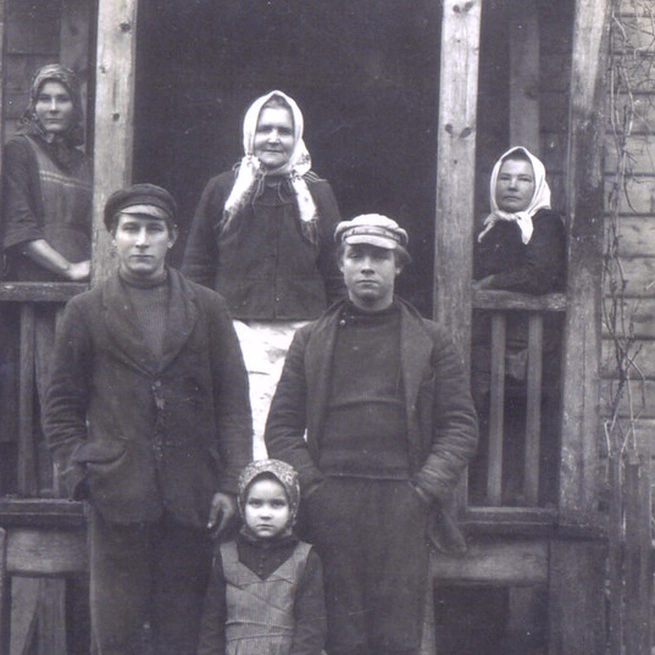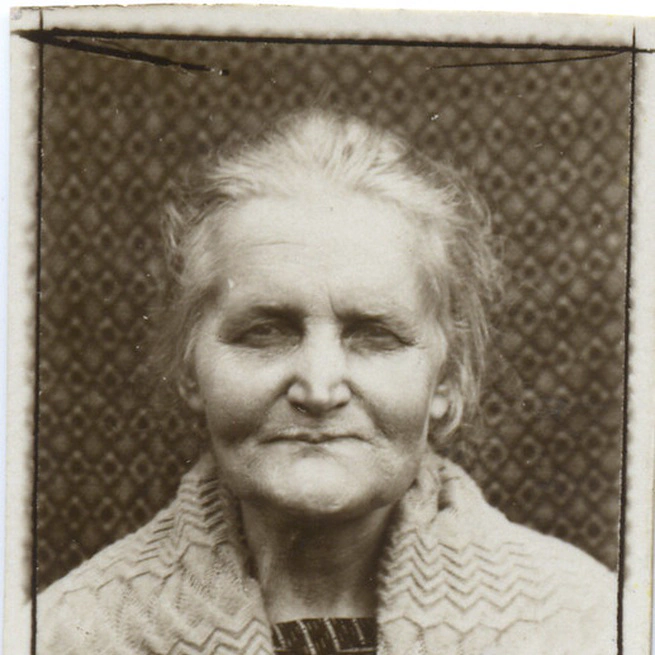
For the first year of the German occupation during the First World War there were no schools in the country. Somehow, a teacher who spoke German and came from the city had obtained permission to teach Latvian language and writing. She opened a school about three kilometres from our house in a very old building with low ceilings. It had tiny windows and the ceilings and walls were black in smoke. It was one, large, long room with plain tables and benches. In this room crowded fifty children of all ages eight to eighteen. We were divided in groups, the older and the younger. Even the air was hard to breathe. If someone farted and did not admit it, they were checked by sniffing down their collar and then sent out to ventilate. Around this building were wild bushes on the hillside and at the bottom of the hill there were pits where gravel was dug to repair the roads. That is where we played traditional children’s games. The school did not last long. After Christmas, a school was opened in Birze district by a teacher named Janfelds for 50-60 students. Again, it was one large room, but it was light just like a real school.
Jan 17, 2010

They started from the age of six with shepherding pigs in the yard or along the lanes where other animals were guided to the pastures. There was a fence on both sides so my sister Alvine and I just stood at each end of the lane. Time went very slowly, we had to do it for two hours. Next came the shepherding of cows and sheep. I don’t know if it was the same in other parts of Latvia as it was where we were. There were five farms with their buildings close together: Andulas, Digaini, Naglas, Vecvagari, and Zvirbuli. In the middle there was a road only for those properties with a fence along both sides so that the animals could graze along it and be directed to the pastures. The pastures started beyond Andulas. The pastures were common property from ancient times, so all the animals were herded together. The field was a square of about 1 ½ kilometres each side, mostly swampy with some water in places like small lakes. The grass was very coarse and the animals did not like it much. When the five farm animals were combined there were 50-60 cows and 200 sheep. Also, there were five shepherds, usually boys. That is where one learned how to get into trouble. There were some fights with the bigger boys teaching discipline to the younger, first-year beginners. It was the younger ones that got all the hard work – if the animals were going in the wrong direction they had to get them back. The older ones played cards or did their own thing. The younger ones couldn’t complain, it was like the Mafia of today. It was surprising how the animals, on returning to the farms in the evening, each knew to turn into their own yard. At first the calves and lambs would have to be guided. In the spring when the animals were first let out, the older cows, like people, chose a leader. The strongest took on the leadership and got respect. If the battle for leadership got dangerous, the shepherds had to separate them with a whip.
Jan 18, 2010